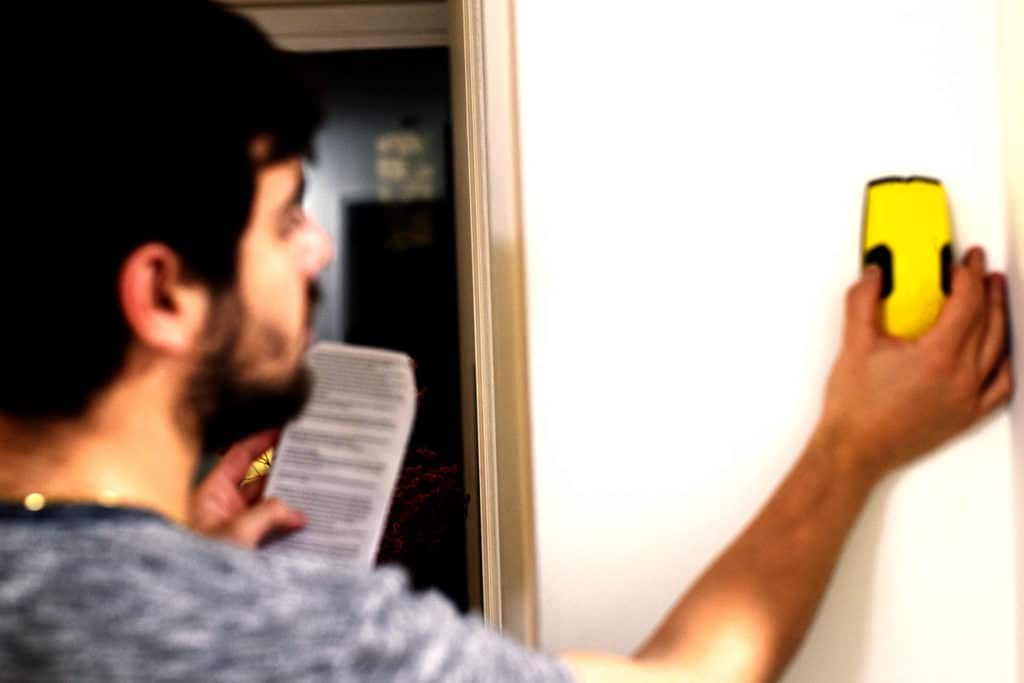Wall studs are essential vertical framing members that provide structural support and a nailing surface for walls in homes. Knowing how far apart studs are spaced is crucial for any DIY project involving walls, from hanging pictures to mounting shelves or televisions. Typically, when homes are built, wall studs are intentionally placed at consistent intervals to ensure structural integrity and ease of construction. If you’re wondering about standard stud spacing, or how to locate studs, especially when you don’t have a stud finder, this guide will provide you with helpful information.
The most common spacing for wall studs is either 16 inches or 24 inches on center (O.C.). “On center” means the measurement is taken from the center of one stud to the center of the next. This spacing is a fundamental aspect of framing standards in residential construction in many regions, designed to balance material efficiency with structural soundness.
- 16 inches O.C.: This is the more prevalent spacing, offering greater structural support and a more robust nailing surface. Walls framed at 16 inches O.C. are generally considered stronger and are suitable for most residential applications.
- 24 inches O.C.: This wider spacing uses fewer studs, reducing material costs and labor. It’s often used in non-load-bearing walls or areas where structural demands are less critical, such as some interior walls. However, it may result in slightly less support and can sometimes make it more challenging to find secure attachment points for heavier items.
While a stud finder is a convenient tool to locate studs, there are several effective methods you can use even without one.
-
The 16 and 24 Inch Rule: Knowing the standard spacing is your first advantage. Start by measuring from a corner of the wall, as studs are almost always placed at the corners. Measure out 16 inches. If you don’t find a stud there, try measuring 24 inches from the corner. Studs are typically placed consistently at either 16-inch or 24-inch intervals throughout the wall.
-
The Flashlight Trick: This method uses light and shadow to reveal the seams in your drywall or plasterboard. Hold a flashlight flat against the wall and shine the light across the surface at an angle. Look closely along the wall. The subtle lines where two sheets of drywall meet often indicate the presence of a stud, as drywall panels are typically joined at the center of a stud for secure attachment.
-
Locate Electrical Outlets and Switches: Electrical boxes for outlets and light switches are usually attached to the side of a stud. Therefore, finding an outlet or switch can be a good indicator of a nearby stud. Keep in mind that there will be studs on either side of the electrical box, but the box itself is directly fastened to one.
-
The Sound Test (Tapping): This method relies on listening to the sound difference when you tap on a stud versus the hollow space between studs. Gently tap along the wall. When you tap directly over a stud, the sound will usually be solid and less hollow. When you tap between studs, the sound will typically be more hollow, as you’re tapping on unsupported drywall.
-
The Nail Test (Use with Caution): As a last resort to confirm a stud’s location, you can carefully drive a very thin finishing nail or a pin nail through the drywall, ideally near the baseboard where holes are less noticeable. If the nail hits solid wood shortly beneath the surface, you’ve likely found a stud. If it goes in easily with no resistance, you’re in the hollow space between studs. Important Safety Note: Be extremely cautious when using this method to avoid hitting electrical wires or plumbing within the wall. Drill slowly and stop immediately if you encounter unexpected resistance or any signs of electrical components. It’s always best to start low near the baseboard to minimize visibility of any test holes.
 how far apart are studs in walls showing drywall seam
how far apart are studs in walls showing drywall seam
Before starting any project that involves drilling or nailing into walls, it is essential to check your local building codes. These codes may have specific requirements or guidelines regarding wall construction and safety. Always prioritize safety and take necessary precautions when working on home improvement projects. Remember to exercise caution and avoid damaging electrical wiring or plumbing when locating studs.